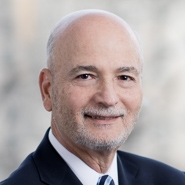Don’t Just Shuffle Offices: Give Local Officials Teeth
Secretary Ryan Zinke’s conceptual reorganization proposals inspire cautious optimism, but to be successful the plans need teeth to achieve the presumptive goal: more timely and efficient decisionmaking. The secretary of the interior must reconcile multiple, often competing, and sometimes mutually exclusive responsibilities when facilitating resource development on public lands. These may range from a large-scale oil-and-gas project, or a plan for the development of other leasable minerals, or hard rock claims located under the Mining Law.
Such projects are at the intersection of the secretary’s multiple-use mandates, responsibilities under the Endangered Species Act, statutory obligations to protect the nation’s parks and wildlife refuges, and trust responsibility to manage resources for the benefit of Native Americans. Layered on these competing demands are the external interests of other federal resource agencies, including the Army Corps of Engineers, and the Forest Service.
DOI organizational changes are not new. Following Deepwater Horizon, Secretary Ken Salazar reorganized the former Minerals Management Service into (forgive the acronyms) BOEM, BSEE, and ONRR, with the last, revenue-collection office reassigned under the assistant secretary for policy, management, and budget. MMS was itself created by the stroke of the secretary’s pen in the early 1980s. But the mixed results of these efforts caution that not all organizational reform reduces inefficiency and confusion.
The Bureau of Land Management has seen more modest organizational changes over the years. In response to the Energy Policy Act of 2005, the department began co-locating staff from BLM and other federal agencies to minimize duplication of effort in environmental reviews and expedite decisions. Congress further mandated inter-agency collaboration under the FAST Act of 2015 to facilitate energy and infrastructure projects, including on federally managed lands.
While these efforts sometimes succeeded in shortening environmental reviews, benefits have been limited, even where only DOI bureaus were involved. For example, if BLM is primarily responsible for completing an environmental impact statement for a major project, but Fish and Wildlife Service biologists are dilatory in completing ESA consultation, BLM lacks supervisory authority over the co-located FWS personnel to avoid protracted decisionmaking delays.
DOI surely would benefit from further organizational efficiencies to reduce longstanding problems stemming from fragmented and slow decisionmaking. As an example, BLM often has several district offices within a single state office, with multiple field offices within each district. As operators on public lands have long experienced, this multiplicity of responsibilities results in inconsistent application of policies and regulations within even a single state. But simply eliminating state offices will not resolve these problems.
The secretary has created a stir in Congress and among the states by suggesting eco-regional administrative boundaries for new DOI offices in the West. This would parallel the administrative boundaries of certain Interior and other agencies, and is attractive from a planning or high-level resource-management perspective. But reducing the role of state-level players could frustrate decisionmaking that is responsive to the needs of the people who most use federally managed natural resources.
States currently play a significant role in determining how such resources within their borders are allocated and used. They also have a direct stake — via royalties and other economic benefits of development — in just how the federal resources within their boundaries are utilized. States are justifiably concerned that creating multistate eco-regional decisionmaking bodies superior to state offices would upset the existing balance.
The secretary is also considering moving BLM and other bureau headquarters to the western states. Moving DOI senior managers closer to the public lands they oversee has merit, but presents a somewhat converse risk of making management of nationally owned lands too localized. Because policy governing federally managed lands historically emanates from Washington, those relocated managers risk being cut off from national policy discussion and perspective, even as they are expected to implement Washington’s policies on the ground.
Whether these physical moves occur or the current structure is just tweaked, the secretary should ensure that regional or local managers remain closely involved in the formulation of agency policy and, more importantly, are vested with the authority to require that co-located representatives of all DOI agencies are held accountable for timely implementation of their respective responsibilities.
Reorganization holds the promise for beneficial change. But it will take more than simply reshuffling office locations to facilitate timely actions relating to the development of the nation’s mineral and other resources. While expediency is the end goal, the department and Congress should assess the pros and cons of any reorganization plan slowly and thoughtfully.
©2018. Published in The Environmental Forum, May/June 2018, by the Environmental Law Institute. Reproduced with permission. All rights reserved.









